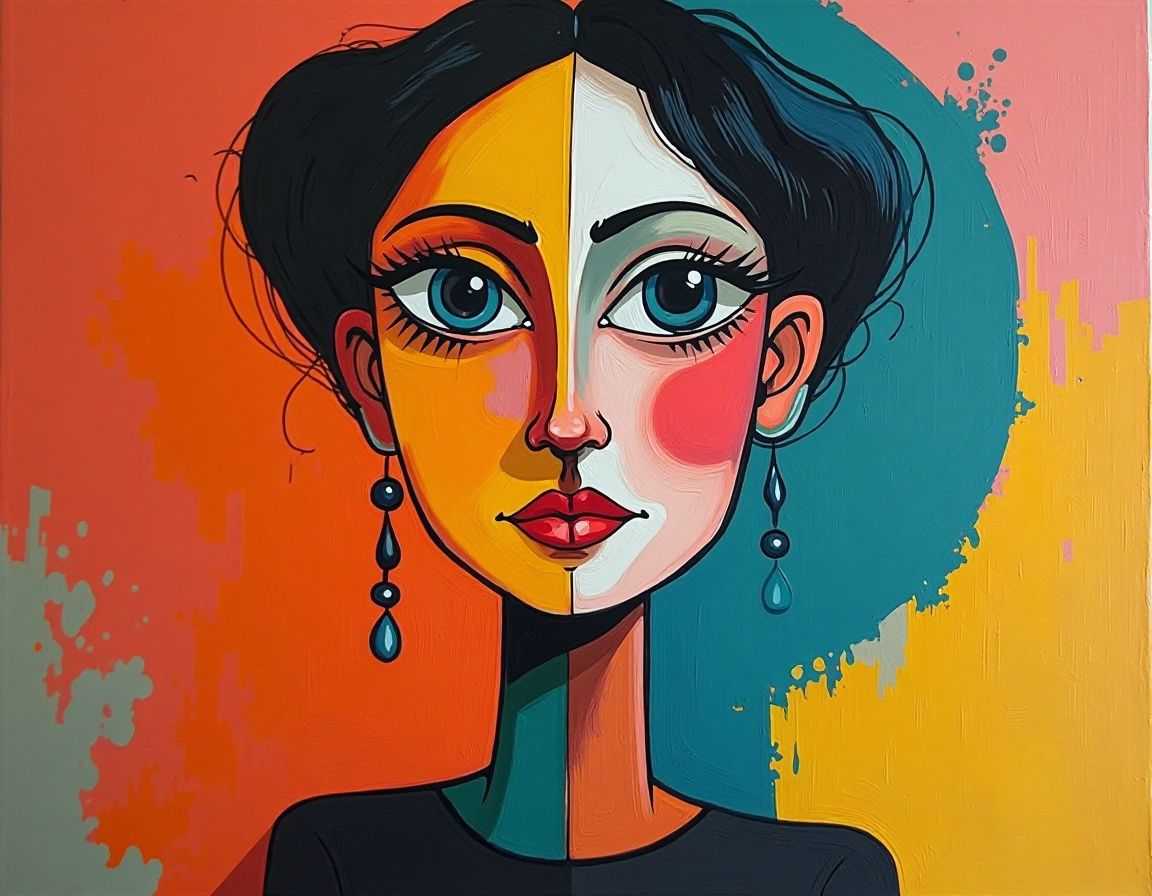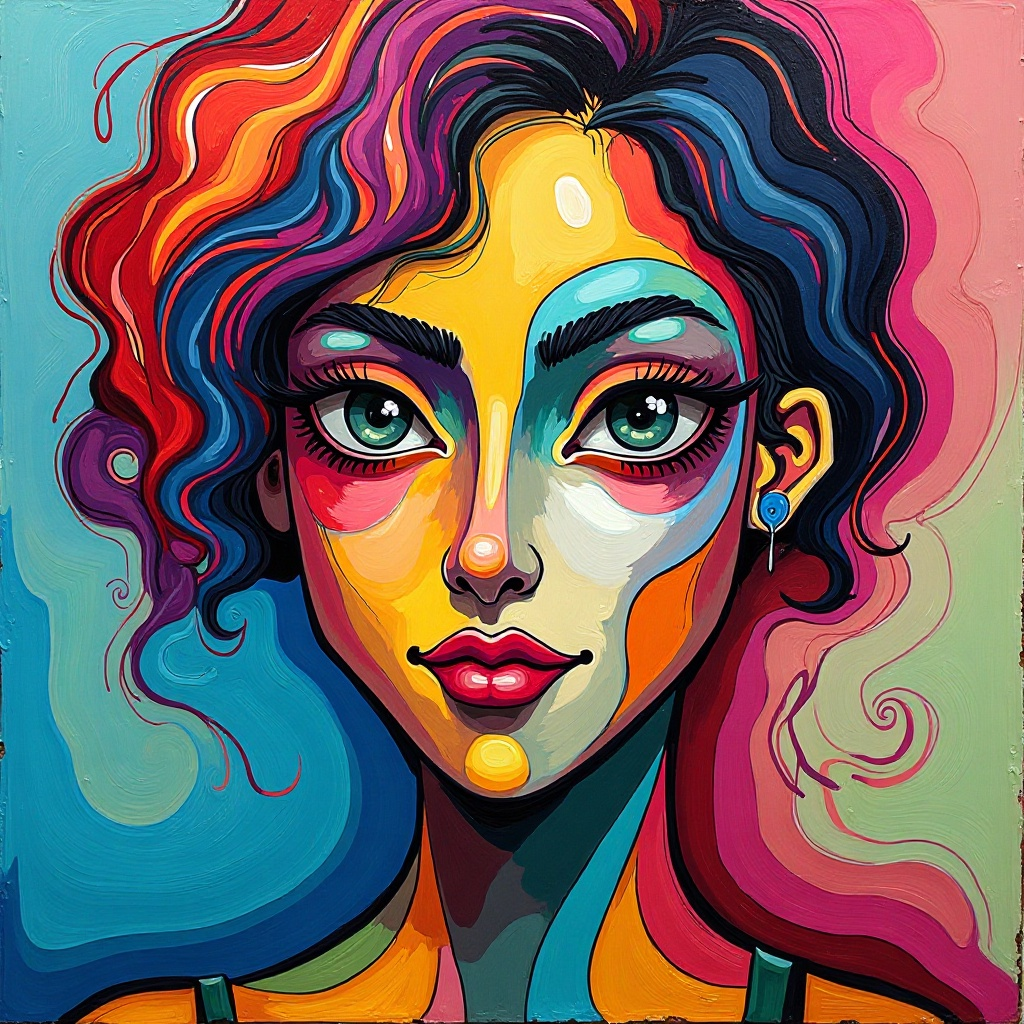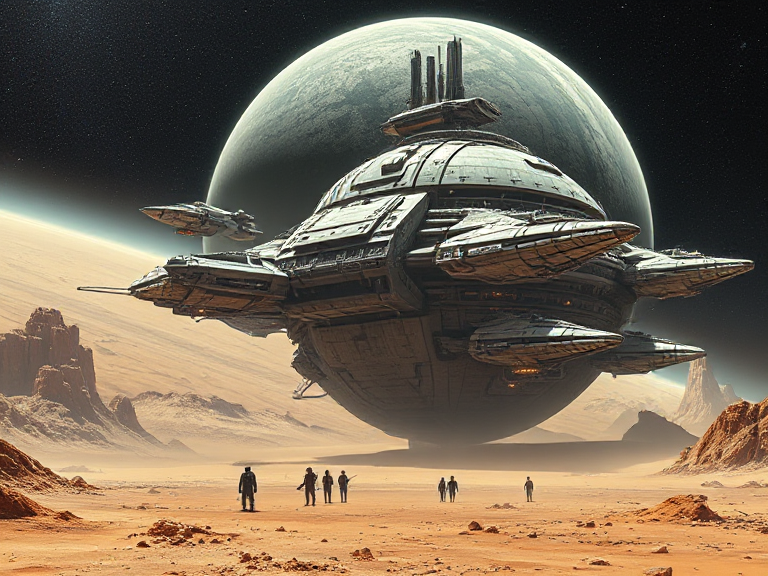Guides and Tips for Creating Abstract Self-Portraits with AI

Have you ever wanted to create stunning art but felt held back by a lack of traditional skills? AI is changing that. With AI tools, you can generate abstract self-portraits that reflect your personality in ways you never imagined. These tools simplify the process, making digital art accessible to everyone, even if you’ve never picked up a paintbrush.
The buzz around AI art is undeniable. From growing online communities to exciting weekly challenges, people everywhere are unlocking new levels of self-expression through AI. Whether you're a seasoned artist or a complete beginner, now is the perfect time to explore the world of AI-generated abstract self-portraits and discover the artist within you.
What is Abstract Self-Portraits
Abstract self-portraits are artistic representations of oneself that focus on emotions, concepts, or unique styles rather than realistic details. They use shapes, colors, and textures to express personality, mood, or identity in a creative, non-literal way. This style allows for unlimited creativity, making each portrait deeply personal and open to interpretation.

Key Features of Abstract Portraits
- Focus on shapes, lines, and colors rather than realistic details.
- Reflects mood or feelings through bold or subtle visual elements.
- Colors are often symbolic or unconventional to evoke emotion.
- Facial elements may be fragmented, blended, or reimagined.
- Layers, patterns, or brushstrokes add depth and interest.
- Symbolism: Incorporates elements that represent ideas, personality, or experiences.
- Prioritizes interpretation and meaning over literal representation.
Tips and Tricks to Generate Abstract Self-Portraits Using AI
#1. Getting Started with The Right AI Tools

Creating abstract self-portraits with AI is a simple and enjoyable process when you choose the right tool. Vheer's AI Image Generator stands out as an excellent free option, offering a quick and seamless way to create stunning abstract portraits. The tool works entirely based on the prompts you enter, so there’s no need to navigate complex settings or fill out forms asking for details like style, gender, background, or color scheme.
The process is straightforward. You start by typing a clear and descriptive prompt into the provided input box. After that, you select the preferred aspect ratio for the final image. Once ready, click the "Generate" button and let the AI bring your vision to life.
The most important part of the process is crafting your prompt. To achieve the best results, focus on providing specific details. For instance, instead of entering a generic prompt like “A vibrant abstract self-portrait,” try something more detailed, such as “A vibrant abstract self-portrait of a woman with swirling colors and bold lines.” This level of detail gives the AI the guidance it needs to produce unique and visually stunning artwork.
#2. Setting Up for Success
AI tools rely heavily on the prompts you provide. Think of prompts as instructions that guide the AI in generating your art. The more specific and descriptive you are, the better the results. For example, instead of saying “abstract self-portrait,” try something like “a surreal abstract self-portrait with geometric shapes and vibrant colors.” This gives the AI a clearer idea of what you want.
Keep in mind that AI doesn’t think like humans. It processes words and patterns, so experimenting with different prompts can help you discover what works best.
#3. Preparing Reference Images (Optional)

While not always necessary, reference images can enhance your results. Uploading a photo of yourself allows the AI to incorporate your features into the artwork. This step is especially useful if you want your abstract self-portrait to retain some recognizable elements. However, if you prefer a more interpretive approach, you can skip this step and let the AI’s creativity take over.
Tip: If you’re using reference images, choose ones with clear lighting and minimal distractions. This helps the AI focus on the key details.
#4. Craft Effective Prompts for Abstract Portrait
Prompts are the backbone of creating stunning AI art. They act as your instructions, guiding the AI to understand what you want. A well-crafted prompt can make the difference between a generic image and a masterpiece that feels personal and unique.
Use Keywords for Abstract Styles
Keywords are your secret weapon for generating abstract self-portraits. Words like “surreal,” “geometric,” or “ethereal” can help the AI understand the artistic vibe you’re going for. Want something bold and modern? Use terms like “cubist” or “futuristic.” Looking for something softer? Try “minimalist” or “dreamlike.” These keywords shape the AI’s approach and ensure your images reflect the style you want.
Good Prompt Examples for Abstract Self-Portraits
Here are some examples to inspire your own prompts:
A vibrant abstract self-portrait with swirling colors and bold lines.
A minimalist self-portrait in the style of cubism, with muted tones.
A surreal self-portrait with fragmented shapes and glowing highlights.
A dreamy abstract self-portrait with soft pastel hues and flowing textures.
A striking abstract portrait with sharp, angular lines and contrasting dark and light areas.
These examples capture moments, evoke mystery, and showcase unique styles. Use them as a starting point or tweak them to match your vision.
#5. Exploring Different Art Styles

When creating abstract self-portraits, exploring different art styles can completely transform the mood and meaning of your images. Each style brings its own unique flair and emotional depth.
Abstract Expressionism
If you want your self-portrait to feel raw and emotional, abstract expressionism is a great choice. This art style focuses on bold brushstrokes, dynamic movement, and vibrant colors. It’s all about expressing feelings rather than creating something realistic. You can use this style to channel energy, passion, or even chaos into your AI-generated art.
Surrealism
Surrealism takes your self-portrait into the realm of dreams and imagination. Think of melting shapes, floating objects, or unexpected juxtapositions. This style invites viewers to interpret your art in their own way, making it deeply personal and thought-provoking. Surrealism works well if you want your AI art to feel mysterious or otherworldly.
Minimalism
For a clean and modern look, minimalism is the way to go. This style strips away unnecessary details, focusing on simple shapes and muted colors. It’s perfect if you want your self-portrait to feel calm and understated. Minimalism proves that less can truly be more.
Tip: Experiment with combining styles. For example, mix surrealism with minimalism to create something truly unique.
#6. Playing with Colors
Color is one of the most powerful tools in AI art. It sets the tone and evokes emotions in your abstract self-portraits.
Monochromatic vs. Multicolor Schemes
Monochromatic schemes use shades of a single color to create a sense of calm and focus. For instance, soft blues or grays can make your portrait feel serene. On the other hand, multicolor palettes bring energy and excitement. Bright oranges, yellows, and reds can make your art pop and grab attention.

Using Contrasting or Harmonious Palettes
Contrasting palettes, like pairing blue and orange, create drama and visual interest. They make your self-portrait stand out. Harmonious palettes, such as combining shades of green and yellow, feel more soothing and balanced. Both approaches can enhance the emotional impact of your AI-generated art, depending on the mood you want to convey.
#7. Adding Unique Design Elements
To make your abstract self-portrait truly stand out, consider adding unique design elements.

Incorporating Textures or Patterns
Textures add depth and dimension to your art. You can experiment with thick, painterly strokes or delicate, intricate patterns. For example, geometric textures inspired by Cubism can give your portrait a modern edge. Patterns like swirls or grids can also add a sense of movement or structure.
Using Symbolic Imagery
Symbolic imagery takes your self-portrait to the next level. Incorporate elements like flowers, stars, or abstract shapes that hold personal meaning. These symbols can tell a story or represent aspects of your personality, making your AI art feel even more connected to you.
Step By Step Guide to Create Abstract Self-portraits
Step 1: Slect The Right Tool
Go to Vheer and select the Text to Image tool from the menu. This tool lets you create AI-generated images from prompts, making it easy to produce abstract portraits.

Step 2:
Once you're in the Text to Image generator, type your prompt into the box on the right panel. Be clear about the details you want for your abstract portrait, such as style, gender, facial features, mood, and any specific elements you’d like to include.

Step 3: Select the Aspect Ratio
Next, choose the aspect ratio for the image output. Options include 1:1, 1:2, 2:1, 2:3, 3:2, 9:16, and 16:9.

Step 4:Generate and Preview the Result
When you’re ready, click "Generate." The AI will create your high-resolution abstract portrait in just a few seconds. You can preview the result and download it without any watermark.

What Are Applications of an Abstract Portrait
Printing and Framing
Turning your AI-generated abstract self-portraits into physical art can make them feel even more special. Printing your images on high-quality paper or canvas gives them a professional touch. You can frame your favorite pieces and display them in your home or workspace. This not only adds a personal flair to your surroundings but also showcases your creativity to visitors. Many online services offer affordable printing options, so you don’t need to worry about technical details.

Sharing on Social Media or Online Galleries
Social media platforms are fantastic for sharing your AI art with the world. Platforms like Instagram, Pinterest, and Twitter allow you to connect with other artists and art enthusiasts. You can also join AI art marketplaces, which act as virtual galleries where you can showcase and even sell your work. These spaces help you reach a global audience and tap into a growing niche of AI art collectors. To maximize your reach, use relevant hashtags, engage with your followers, and participate in community challenges.
Using as a Fun Profile Pictures
Your abstract self-portraits can make unique profile pictures or avatars. They stand out from generic photos and add a personal, artistic touch to your online presence. Whether you’re updating your social media accounts or creating a professional avatar for work, these images can reflect your personality in a creative way.
FAQ
What is the best AI tool for creating abstract self-portraits?
The best tool depends on your goals. DALL·E is great for imaginative visuals, MidJourney excels at artistic styles, and Stable Diffusion offers flexibility. Try a few to see which one matches your vision.
Do I need to be an artist to use AI for self-portraits?
Not at all! AI art tools make creating abstract self-portraits easy for everyone. You don’t need any prior experience. Just experiment with prompts and let the AI handle the rest.
Can I sell my AI-generated abstract self-portraits?
Yes, you can! Many artists sell their AI-generated art online. Make sure you check the licensing terms of the AI tool you’re using to ensure you have the rights to sell your creations.
How do I make my AI-generated art more unique?
Use specific prompts, experiment with styles, and combine outputs. Adding personal elements like symbolic imagery or editing with tools like Photoshop can also make your art stand out.
Are abstract self-portraits created with AI customizable?
Absolutely! You can customize them by tweaking prompts, choosing specific styles, or uploading reference images. The more details you provide, the more personalized your art will be.

